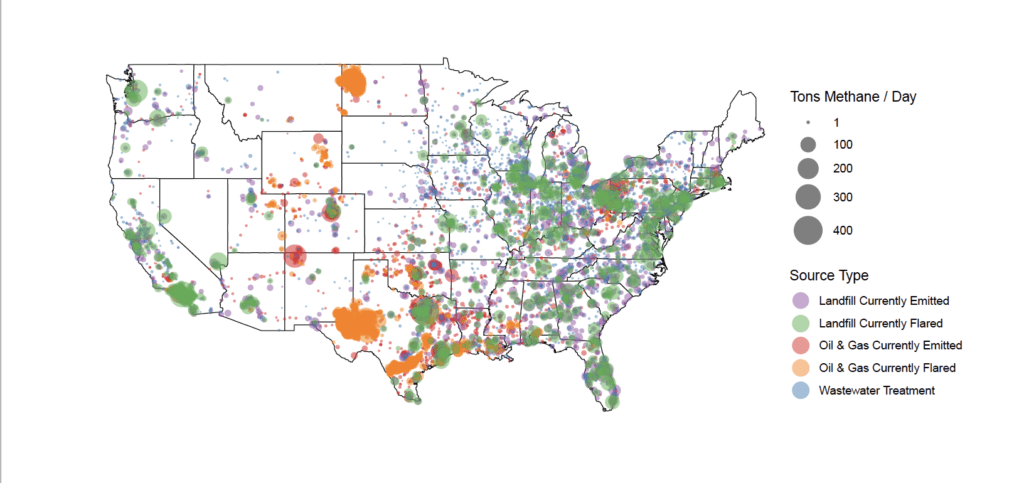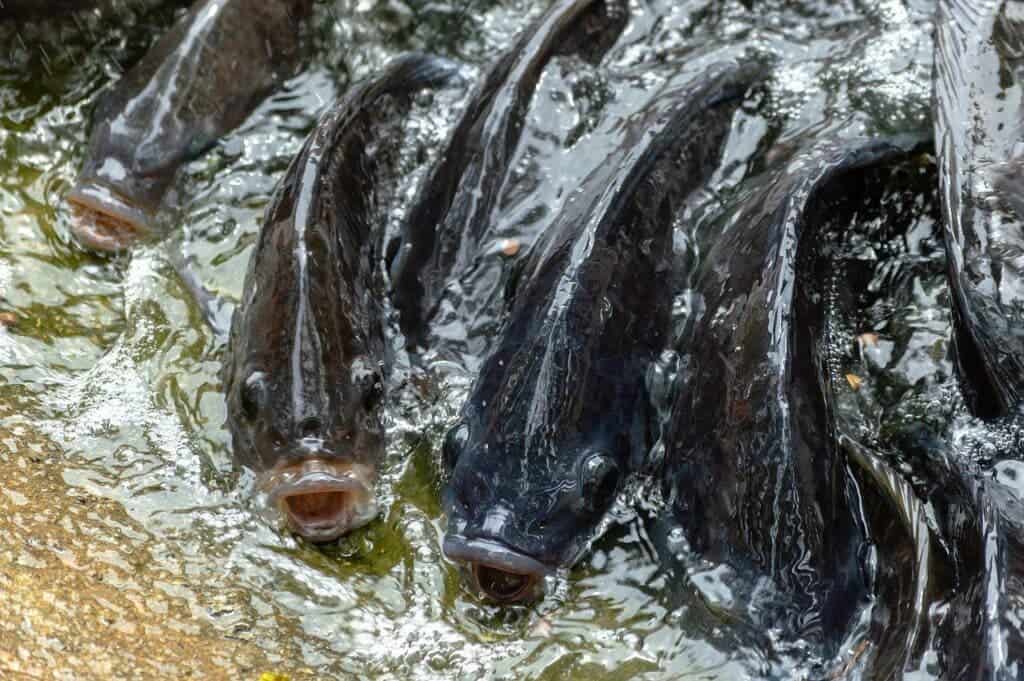Why not turn a problem into an asset?
ZME
November 29, 2021
The issue of methane pollution might become an asset in the future, thanks to new technology that can transform this potent greenhouse gas into fish food.
November 29, 2021
The issue of methane pollution might become an asset in the future, thanks to new technology that can transform this potent greenhouse gas into fish food.
Sirawich Rungsimanop.
Approaches to converting methane into fishmeal have already been developed, the authors note, but the economic uncertainty during the pandemic has prevented its use to promote food security on any meaningful scale. The new study analyzes the method’s economic viability today. The main takeaway of the research is that methane-to-fishmeal conversion is economically feasible for certain sources of the gas and that other sources can be made profitable with certain improvements.
The approach can also be of quite significant help against climate change, the team adds, and is capable of meeting all the global demand for fishmeal, further reducing the strain we’re placing on natural ecosystems.
Untapped resource
“Industrial sources in the U.S. are emitting a truly staggering amount of methane, which is uneconomical to capture and use with current applications,” said study lead author Sahar El Abbadia, a lecturer in the Civic, Liberal and Global Education program at Stanford.
“Our goal is to flip that paradigm, using biotechnology to create a high-value product.”
Carbon dioxide is the best-known greenhouse gas, and currently the most abundant one in the Earth’s atmosphere. That being said, methane is another important player in our current climate woes. Methane is estimated to have 85 times the global warming potential of CO2 over a 20-year period, and at least 25 times as great a potential over a 100-year period. Methane also represents a direct hazard to public health as concentrations of this gas are increasing in the troposphere (the lower layer of the atmosphere, where people live). An estimated 1 million premature deaths occur worldwide, per year, due to respiratory illnesses associated with methane exposure.
The problem posed by methane is also increasing over time: the relative concentration of this gas in the atmosphere has been increasing twice as fast as that of CO2 since the onset of the Industrial Revolution, the team explains. Although there are natural sources of atmospheric methane, mostly through the decomposition of organic matter and from digestive processes, the lion’s share of that increase is owed to human-driven emissions.
Methanotrophs, bacteria that consume methane, have been explored as a potential solution in the past. If supplied with methane, oxygen, and certain nutrients, these bacteria produce a protein-rich sludge that can be used, among other things, to produce feedstock for fish farms. This process is already in commercial use by some companies; however, they are supplied by methane fed through gas distribution grids.
The authors note that capturing methane emissions — such as those from landfills, wastewater treatment plants, or leaked at oil and gas facilities — would be both cheaper and much more eco-friendly. Besides economic and environmental benefits, the shift from pumped to captured methane in the production of fishmeal would also help ensure humanity’s greater food security. The authors explain that seafood consumption has increased more than four times since the 1960s, with grave consequences for natural fish stocks.
Aquaculture (fish farms) now provide around half of the quantity of animal-sourced seafood consumed globally. Demand for seafood in the form of algae and animals is also estimated to double by 2050, the team adds, which will place increased strain on producers.
Against this backdrop, methane-sourced fish feed can represent an important asset towards food security in the future, and allow us to have the seafood we crave for minimal environmental impact.
Makes economic sense

Unused methane emissions in the U.S. from landfills, wastewater treatment plants and oil and gas facilities. Image credits El Abbadi, et al., (2021), Nature Sustainability.
In order to determine whether such efforts would also be economically-feasible, the team modeled several scenarios, each with a different source of methane used in the production of the fishmeal. These included natural gas purchased from commercial grids, as well as methane captured from relatively large wastewater treatment plants, landfills, and oil and gas facilities. For each scenario, they looked at a range of variables that would factor into a company’s bottom line, including the availability of trained labor and the cost of electricity used to keep the bioreactors running.
In the scenarios that involved methane capture from landfills and oil & gas facilities, the production cost for one ton of fishmeal would be $1,546 and $1,531, respectively. Both are lower than the 10-year average market price of such products, which sits at $1,600. In scenarios in which methane capture was performed at wastewater treatment plants, the cost per ton sat at $1,645, which is just slightly over the market average. However, the highest prices per ton were seen when methane was purchased directly from the commercial grid — $1,783 per ton.
Surprisingly enough, electricity was the single largest expense for all scenarios, representing around 45% of total costs on average. This means that areas with low electricity production costs could see significant decreases. The authors estimate that in states such as Mississippi and Texas, these costs would go down by around 20%, to an average of $1,214 per ton ($386 less than the 10-year average).
With certain improvements, such as bioreactors with more efficient heat transfer to reduce the need for cooling, production costs can be reduced even further. Even in the scenarios where wastewater treatment plants provided the methane, steps can be taken to reduce costs. For example, wastewater itself can be used as a source of nitrogen and phosphorus (key nutrients), as well as for cooling.
The team estimates that if manufacturers can bring the per ton production cost by 20%, there would be profits to be made even if all the supply of fishmeal today was covered using methane-produced materials with gas captured in the U.S. alone. With ever more reductions in cost per ton, such products could out-compete soybean and other crops for animal feed in general.
“Despite decades of trying, the energy industry has had trouble finding a good use for stranded natural gas,” said study co-author Evan David Sherwin, a postdoctoral researcher in energy resources engineering at Stanford. “Once we started looking at the energy and food systems together, it became clear that we could solve at least two long-standing problems at once.”
The paper “Displacing fishmeal with protein derived from stranded methane” has been published in the journal Nature Sustainability.
In order to determine whether such efforts would also be economically-feasible, the team modeled several scenarios, each with a different source of methane used in the production of the fishmeal. These included natural gas purchased from commercial grids, as well as methane captured from relatively large wastewater treatment plants, landfills, and oil and gas facilities. For each scenario, they looked at a range of variables that would factor into a company’s bottom line, including the availability of trained labor and the cost of electricity used to keep the bioreactors running.
In the scenarios that involved methane capture from landfills and oil & gas facilities, the production cost for one ton of fishmeal would be $1,546 and $1,531, respectively. Both are lower than the 10-year average market price of such products, which sits at $1,600. In scenarios in which methane capture was performed at wastewater treatment plants, the cost per ton sat at $1,645, which is just slightly over the market average. However, the highest prices per ton were seen when methane was purchased directly from the commercial grid — $1,783 per ton.
Surprisingly enough, electricity was the single largest expense for all scenarios, representing around 45% of total costs on average. This means that areas with low electricity production costs could see significant decreases. The authors estimate that in states such as Mississippi and Texas, these costs would go down by around 20%, to an average of $1,214 per ton ($386 less than the 10-year average).
With certain improvements, such as bioreactors with more efficient heat transfer to reduce the need for cooling, production costs can be reduced even further. Even in the scenarios where wastewater treatment plants provided the methane, steps can be taken to reduce costs. For example, wastewater itself can be used as a source of nitrogen and phosphorus (key nutrients), as well as for cooling.
The team estimates that if manufacturers can bring the per ton production cost by 20%, there would be profits to be made even if all the supply of fishmeal today was covered using methane-produced materials with gas captured in the U.S. alone. With ever more reductions in cost per ton, such products could out-compete soybean and other crops for animal feed in general.
“Despite decades of trying, the energy industry has had trouble finding a good use for stranded natural gas,” said study co-author Evan David Sherwin, a postdoctoral researcher in energy resources engineering at Stanford. “Once we started looking at the energy and food systems together, it became clear that we could solve at least two long-standing problems at once.”
The paper “Displacing fishmeal with protein derived from stranded methane” has been published in the journal Nature Sustainability.

No comments:
Post a Comment